Biol 2230 module 15
1/27
There's no tags or description
Looks like no tags are added yet.
Name | Mastery | Learn | Test | Matching | Spaced |
|---|
No study sessions yet.
28 Terms

Who discovered viruses? How?
Dmitri Ivanoski
*Looked for the germ that caused tobacco mosaic disease
*Assumed it was bacteria so he passed the tobacco sap through a filter know to trap bacteria and realized none of the bacteria caught were causing the disease.
*Tested the filtrate (liquid that passed through the filter) by pouring it onto healthy plants and it caused disease in those plants
*Discovered an infectious agent smaller than bacteria that could cause disease

Who was the first to purify and crystalize viruses?
wendell stanley
What is the size range of most viruses?
20-1000 nanometers
very small
What is the structure of a virus?
A typical virus is composed of a core of DNA or RNA surrounded by a protein coat
what are capsids
protein coats that enclose and protect their nucleic acid
what are capsomeres
protein subunits that make up capsids
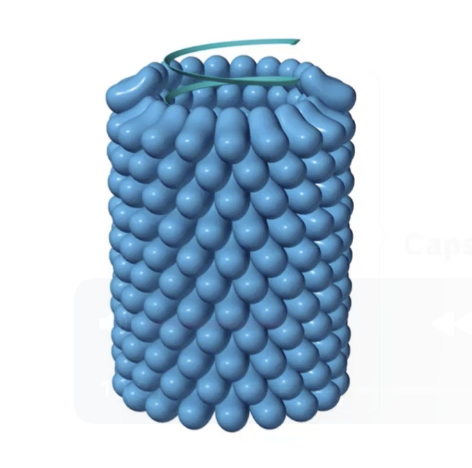
what are helical viruses? Examples?
*Helical- Tube-shaped protein enclosing nucleic acid
Ex: TMV, Ebola virus
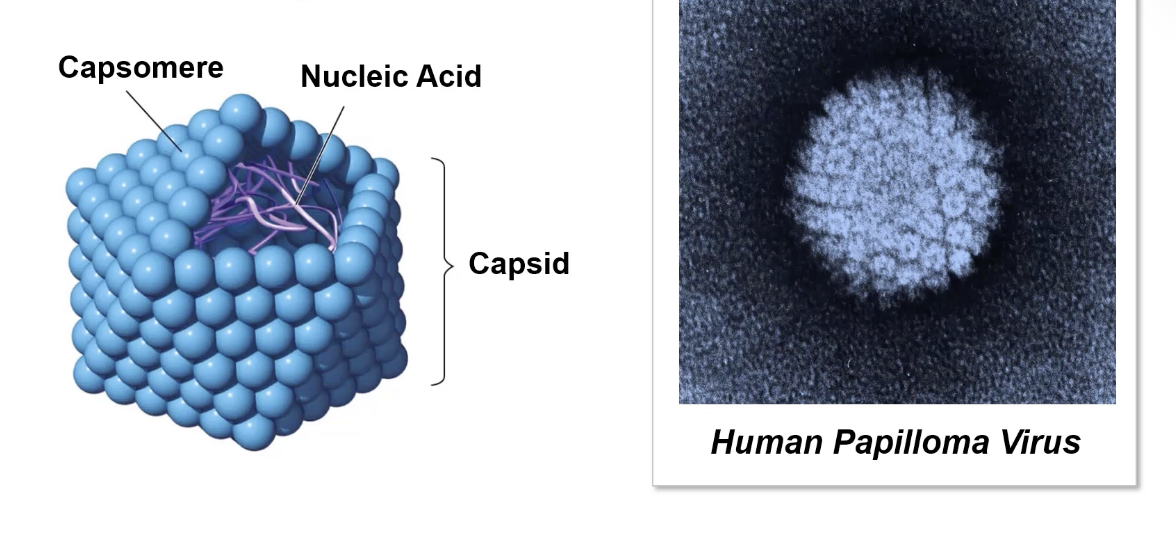
what are non-enveloped viruses? Examples?
Non enveloped- No outer covering around the capsid (aka naked)
Ex: Human Papilloma Virus
What are viral Spikes? Function?
*protein
*involved in attachment to a host cell
What are the various types of viral genomes?
Viral genomes vary
shape
non-enveloped or enveloped
*DNA or RNA
*Double stranded or single-stranded
*Linear or Circular
*Simple (single) or Segmented (multiple)
What are bacteriophage?
viruses that infect bacteria
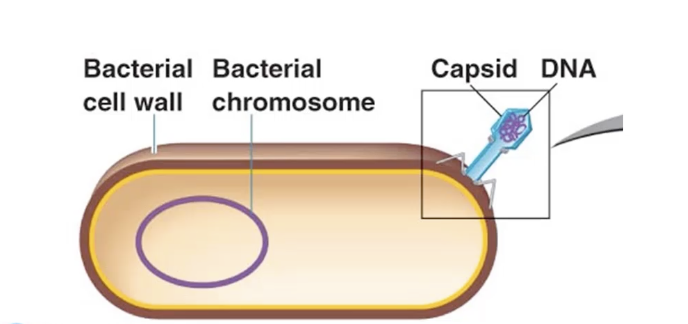
What are the steps in the lytic replication cycle? What occurs during each step?
*Attachment- The phage attaches to the surface of the host
*Penetration- The viral DNA enters the host cell (phage penetrates host cell and injects its dna)
*Biosynthesis- Phage DNA replicates and phage proteins are made (capids, sheaths,
*Maturation- New phage particles are assembled (complete virus)
*Lysis- The cell lyses, releasing the newly made phages
“break open cycle”
What roles does lysozyme play in a bacteriophage infection?
*digests peptidoglycan in the cell wall for penetration
*digests peptidoglycan in the cell wall for release (lysis)
(basically the virus uses lysozyme to drill a hole to get into the cell and then drill a bunch of holes to get out)
How are lytic bacteriophage quantified (counted)? ?
Plaque assay (similar to serial dilutions)
—
Lytic bacteriophages are quantified using the plaque assay, a technique where clear spots (plaques) are counted on a bacterial lawn after phage infection.
What is a plaque?
zones of bacterial death in the "lawn" of bacteria on the plates surface
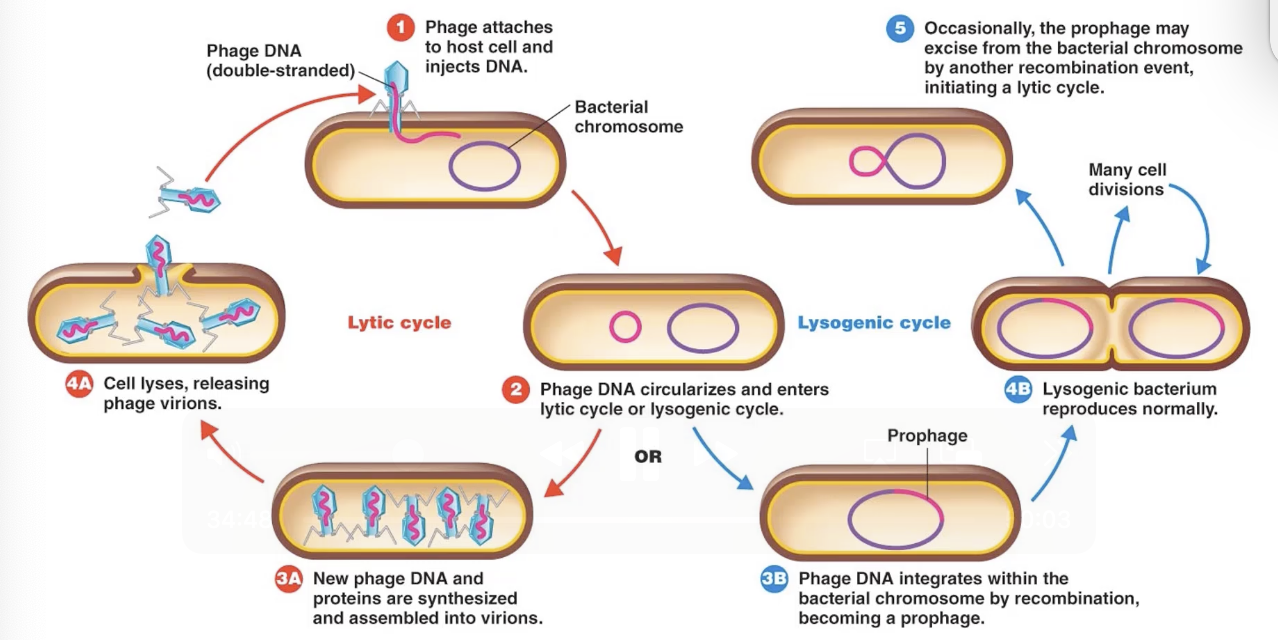
What are the steps in the lysogenic replication cycle?
“slower than lytic”
*After attachment and penetration
*Integration into the host cells chromosome (prophage)
*Reproduction of the host cell (the prophage is replicated together with the bacteria cell
*Induction (due to stress of the host cell) The prophage is excised, initiating reentry into the lytic cycle
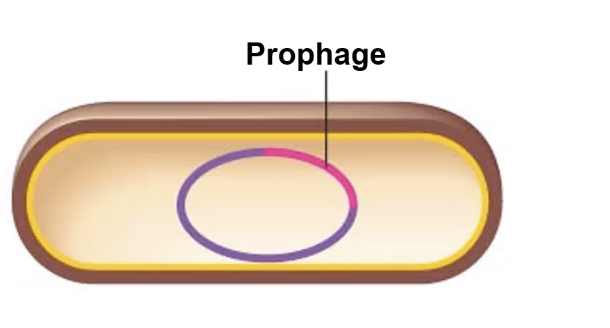
What is a prophage?
The Phage DNA incorporated into the host cells chromosome
What is induction?
The prophage is excised, initiating reentry into the lytic cycle
What causes induction to occur during the lysogenic cycle?
Stress to the host cell
EX: Ph changes, Temperature changes, lack of food, etc.
What is lysogenic conversion? Why is it important medically? Examples?
*Prophage (addition to the host cell's genotype) changes the host cell's phenotype
*Ex: Scarlett fever toxin, botulism toxin
*(The virus entering the bacteria cell can make it a more harmful pathogen)

Who discovered and named bacteriophage? How were they discovered?
*Felix d'Herelle
*studied troops with bacillary dysentery caused by shigella bacteria
*noticed Shigella in some of his fecal broth cultures were dying
*realized something present in the culture was killing them
*Tested culture filtrate (it caused plaques to form when fresh broth cultures were treated and then plated)
What is bacteriophage therapy? What infections can it treat? Why is it safe for use in humans and animals?
*The use of bacteriophages to treat diseases
*Safe because it only kills the targeted bacteria
* Shagilla bacterial dysenterry, plague, cholera, etc,
What are the pros and cons of using phage therapy compared to traditional antibiotics?
Phage therapy pro:
*Only kills the targeted bacteria
*Only a small dose is needed/self limiting
*Opportunity to educate patient
Phage therapy con:
*Must know exact bacterial species and strain
*Less patient acceptance
Antibiotic therapy pro:
*easier to use
*Patient comfort and acceptance
Antibiotic therapy con:
*Kills healthy bacteria
*Large doses repeatedly
*Antibiotic resistance increasing
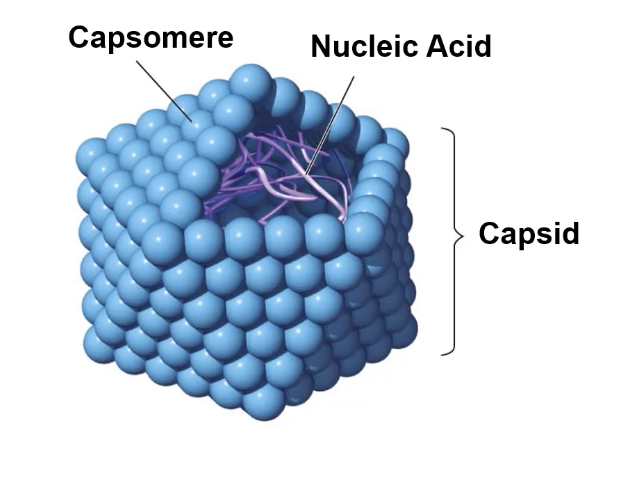
What are polyhedral viruses? Examples?
*Polyhedral- Many sided diamond shaped protein package containing nucleic acid
Ex: Human papilloma virus
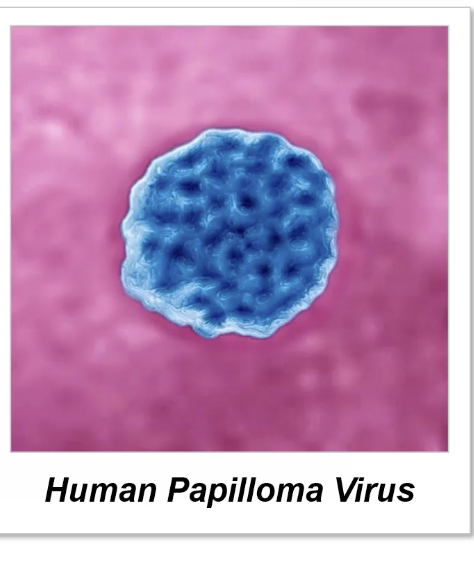
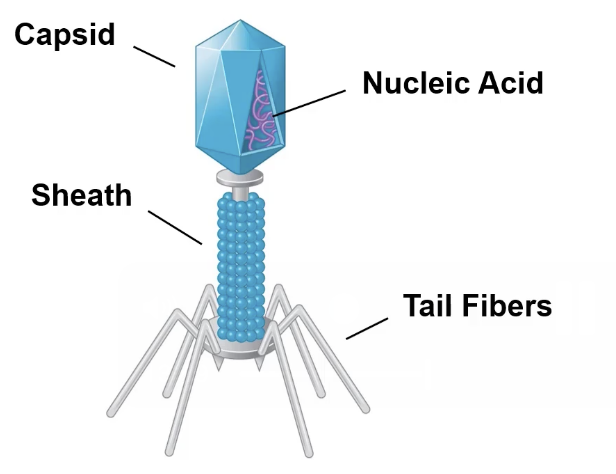
What are complex viruses? Examples?
*Complex-Polyhedron containing nucleic acid plus a tube like protein "sheath" plus protein "tail fibers" (used for attachment to a host cell)
only get into bacteria
Ex: Bacteriophage
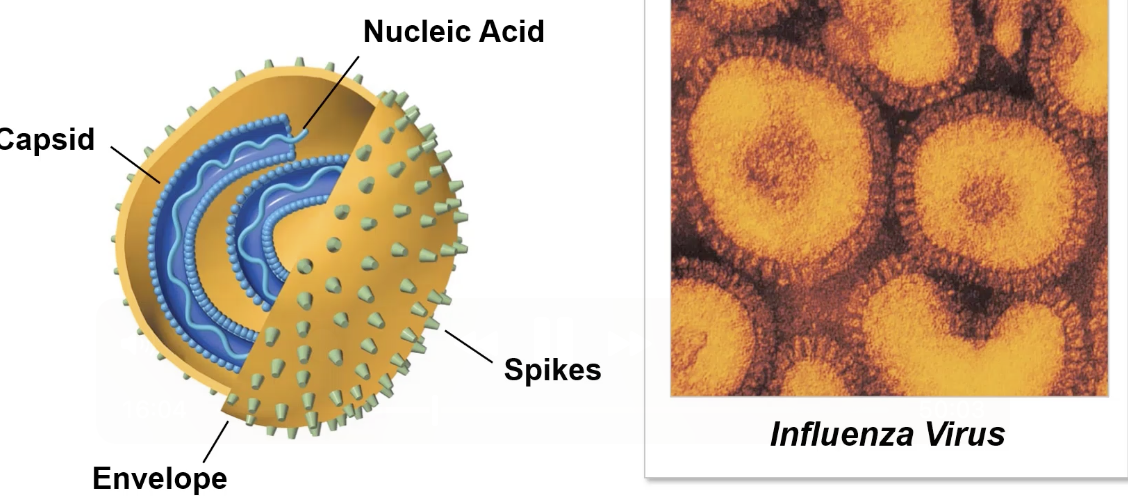
what are enveloped viruses? Examples?
Enveloped- Phospholipid bilayer with protruding spike proteins around the capsid
Ex: Influenza virus, SARS-CoV-2
What is SARS-CoV-2? Characteristic features?
Covid
enveloped virus
spikes (protein)
nucleic acid
capsid
How might viruses be used to fight bacterial infections in humans?
Viruses, specifically bacteriophages, can help humans fight bacterial infections by targeting and killing bacteria, including those that are antibiotic-resistant.
HIGHLY specific (phage therpy)